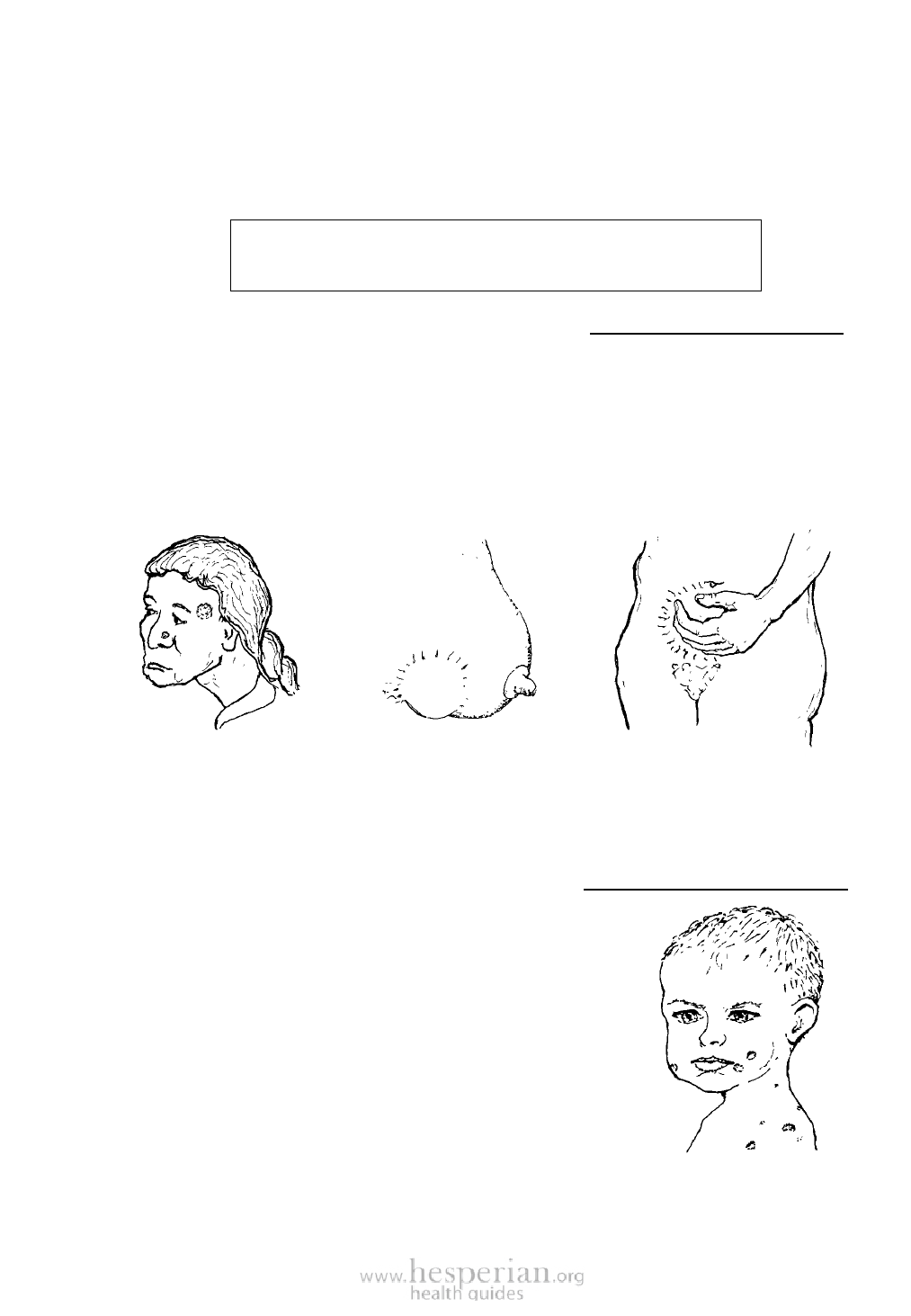
Where There Is No Doctor 2011 25
MISUNDERSTANDINGS DUE TO CONFUSION OF NAMES
This page shows 2 examples of misunderstandings that can result when certain
names like ‘cancer’ and ‘leprosy’ mean one thing to medical workers and something
else to villagers. In talking with health workers-and in using this book:
Avoid misunderstanding— go by the signs and history
of a person’s sickness, not the name people give it!
Spanish Name: CÁNCER (CANCER) Name in Your Area:
Mexican villagers use the word cáncer for any severe infection of the skin,
especially badly infected wounds (p. 88) or gangrene (p. 213).
In modern medical language, cancer is not an infection, but an abnormal growth
or lump in any part of the body. Common types of cancer that you should watch out
for are:
cancer of the skin
(p. 211)
breast cancer
(p. 279)
cancer of the womb or ovaries
(p. 280)
Any hard, painless, slowly growing lump in any part of your body may be cancer.
Cancer is often dangerous and may need surgery.
At the first suspicion of cancer seek medical help.
Spanish Name: LEPRA (LEPROSY) Name in Your Area:
Mexican villagers call any open spreading sore lepra.
This leads to confusion, because medical workers use this
term only for true leprosy (Hansen’s disease, p. 191). Sores
commonly called lepra are:
• impetigo and other skin infections (p. 202)
• sores that come from insect bites or scabies (p. 199)
• chronic sores or skin ulcers such as those caused by
poor circulation (p. 213)
• skin cancer (p. 211)
• less commonly, leprosy (p. 191) or tuberculosis of
the skin (p. 212)
This child has impetigo,
not leprosy.